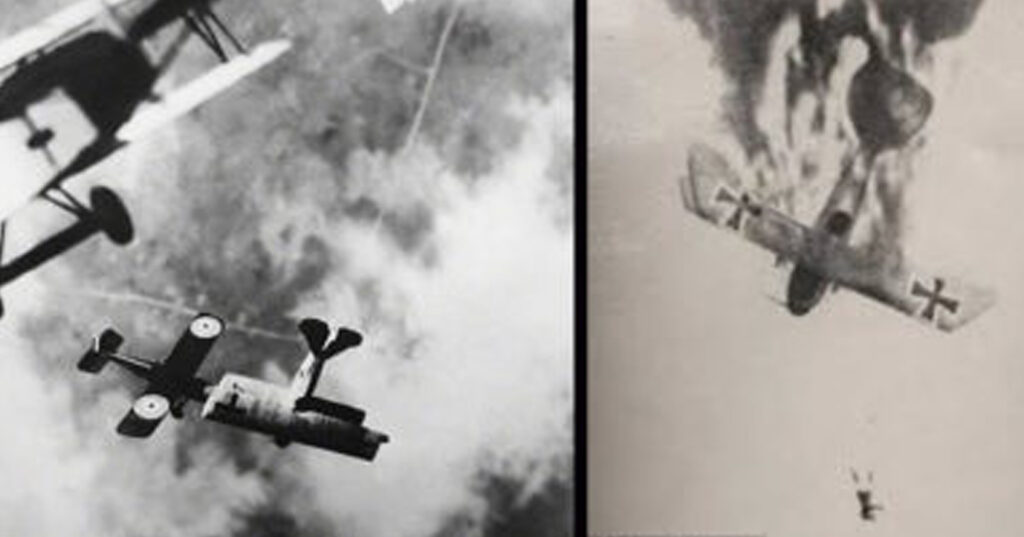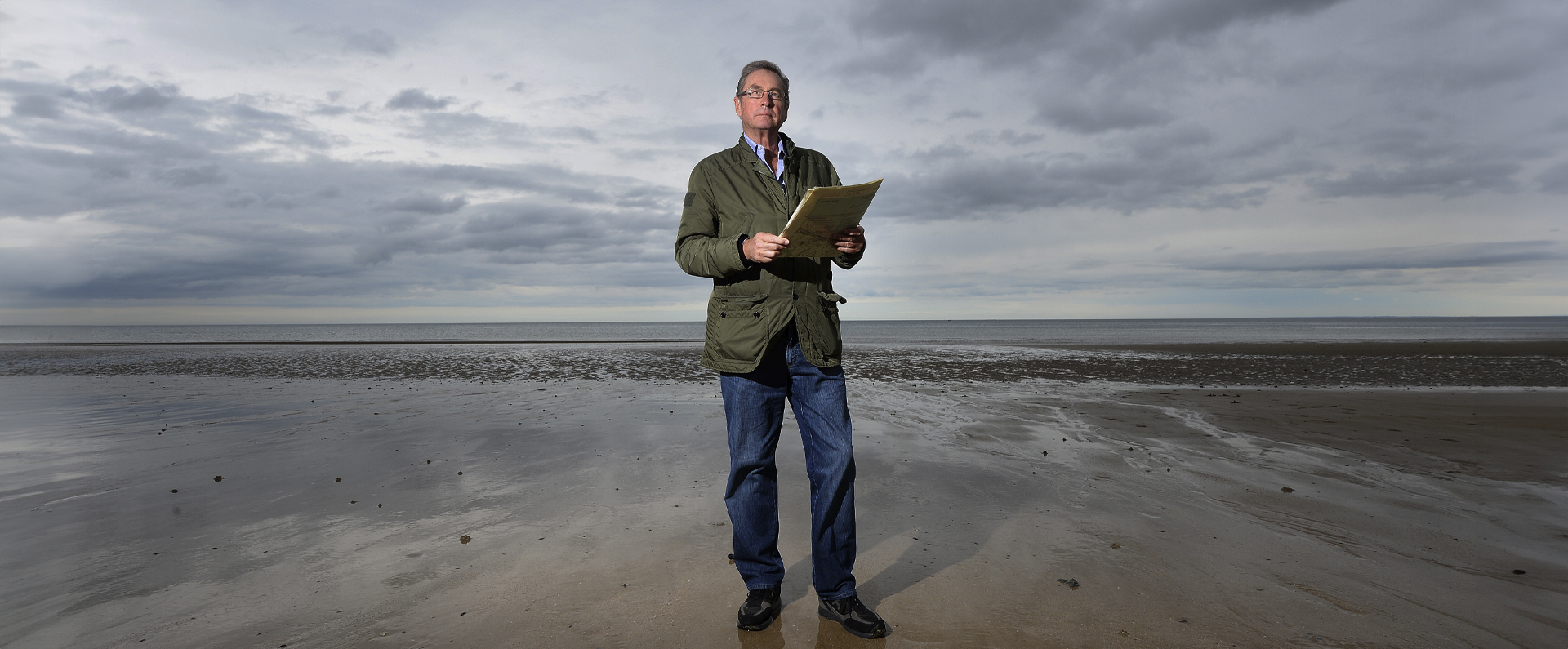
Published in The Sunday Telegraph on 10 August 2014.
They are iconic photographs of First World War aerial dogfights that have been used in books, magazines and newspapers all over the world to capture the daring exploits of the pilots.
In the astonishing images dating back nearly a century, at any one time up to 14 aircraft can be seen in combat. One of the photographs was used just weeks ago to illustrate an article I had written about a courageous pilot that appeared in The Telegraph’s supplements on the Great War.
The photographs are stunning in their clarity, even as the biplanes carry out daring acrobatics – which is perhaps not surprising, given that all of them are carefully manufactured fakes.
The images are the work of an ingenious fraudster, who created them in his photographic studio using models of aircraft suspended by thin “invisible” string and wires. Furthermore, it seems negatives of different model aircraft were superimposed and retouched to form a composite scene.
The motive for the scam was entirely straightforward: to make thousands of pounds for the fraudster and his wife.
The full story of the con pulled off by Wesley D Archer, an American who served in the RAF, can be told because – after my article on Major Mick Mannock appeared in this newspaper’s supplement – I was contacted by a former reconnaissance pilot, Jimmy Taylor, who thought it was time that the scam was brought to the attention of a global audience.
As a teenager, Mr Taylor, now 91, a retired university lecturer who served in the RAF during the Second World War, bought one of the early copies of Death in the Air: The War Diary and Photographs of a Flying Corps Pilot, a book written by Mr Archer and first published in 1933. The book displayed the photographs – the first ever clear images of aerial battles of the Great War – that had first been shown two years earlier as “the Cockburn-Lange Collection”.
The book, which was widely acclaimed in the Thirties and became a bestseller, purported to tell the story of an anonymous British pilot whose identity and that of the squadrons he flew in was supposedly kept secret because he broke the rules by taking a camera with him into aerial battle with his German counterparts.
The photographs were supposedly taken by a camera attached to the machinegun of the aircraft, and the first shot of the machine gun was said to have activated the camera. Although it was said that many images were blurred, the camera also apparently caught Allied Sopwith Camels and Nieuport fighters in combat with German Albatros and Fokker planes.
The foreword to the book, which is illustrated by 44 photographs, begins: “The following is printed from a typewritten manuscript of the diary of a pilot, who took most of the accompanying aerial combat photographs during the War.”
It adds: “Naturally, any entries which would reveal the identity of the squadrons are not contained in this typewritten journal. It is with regret that these have been deleted, but that was the only condition on which permission could be obtained for its publication.”
The dedication also appeared genuine and deeply moving, stating: “In tribute to those men, both friend and foe, who swept the skies on the wings of death, through storm of wind and rain, snow and hail, ever open to attack, constantly flayed by enemy fire from below and the prey of enemy eagles in the sky.”
The dedication ends: “To all pilots who gave their lives for an ideal, and to all those who survived years of conflict and struggle over enemy lines, we offer this tribute – the work of these pilots, who through their ingenuity, left behind in photographs a tangible remembrance.”
In fact, every word of the diary – like the photographs with it – was made up, again to make money for the con man and his wife. Mr Archer had served as a pilot during the 1914-18 war, and was therefore able to create a diary that appeared genuine.
Mr Taylor, who lives in Leeds, West Yorkshire, wrote to me, saying: “As a schoolboy devoted to Biggles, I bought a copy of the 2nd edition [of Death in the Air] in 1936 and was absolutely fascinated by most of the photographs, horrified by two showing an aircraft being hit by AA [Anti Aircraft] fire, appalled by the sight of two other aircraft colliding, and aghast by an awful picture of a German pilot falling out of the cockpit of a blazing Albatros with a parachute, of course.”
Even after becoming something of an expert in both aircraft and photography as a result of being a reconnaissance pilot, Mr Taylor had no idea that the photographs and the diary were fake. Only occasionally did some people raise concerns over their authenticity.
However, in 1985, the 1,000-plus members of a group of aviation enthusiasts, called the Society of World War 1 Aero Historians, were informed of the hoax in their quarterly magazine, Cross & Cockade. Yet because of its tiny circulation, word did not spread.
Only now can the con, thanks to both Mr Taylor and his friend, Paul Leaman, the then editor of the little-known magazine, be brought to a wider audience, in the hope that the photographs will never again be used as if they were genuine.
According to the fraudster, the photographs belonged to a mysterious “Gladys Maud Cockburn-Lange”, supposedly the widow of a Great War pilot and who, after remarrying, said she was unwilling to discuss them out of respect for her dead but unidentified husband.
The con was perpetuated for half a century until the Smithsonian National Air and Space Museum in Washington DC received several large suitcases donated by John Charlton, 84, a New York benefactor, who had been a friend of Mr Archer.
Two men, Peter Grosz, a German aviation writer, and Karl Schneide, who worked in the aeronautics department there, began sorting through the material and came across negatives and letters from “the Cockburn-Lange Collection”.
They discovered that Cockburn-Lange had, in fact, been a pseudonym for Betty Archer, the pilot’s wife.
Their attention then turned to Archer himself. He had been shot down in October 1918 and, after convalescing in Britain, had returned home. In 1920, he had taken a job as a set designer and model-maker in the fledgling film industry and, at some point, embarked on a carefully planned moneymaking wheeze. The two aviation experts even found snapshots of Mr Archer and an accomplice working with their model aircraft to create the fake photographs.
Mr Grosz and Mr Schneide co-wrote the article that appeared in Cross & Cockade. They discovered that the con had accrued the Archers an estimated $20,000 – a small fortune in the Depression-hit America of the Thirties.
Mr Archer died in Cuba in 1955, and his widow four years later, their secret apparently going to the grave with them. But their memorabilia was entrusted to Mr Charlton. Mr Taylor, who served in the RAF in1941-46, said he felt admiration rather than anger towards Mr Archer.
“The whole thing is a brilliant deception. The photographs looked incredibly realistic even if they weren’t. It was a very clever stitch-up that earnt them [Archer and his wife] a great deal of money.” Mr Leaman, 84, a friend of Mr Taylor and who was the unpaid editor of Cross & Cockade, said: “The diary makes good reading. Along with the photographs, it was very convincing.”
The photographs are still used as if they were genuine because they circulated around the world for more than 50 years. A spokesman for the Smithsonian National Air and Space Museum said it accepted the photographs were faked and it pointed this out to those seeking rights to publish them.
For more information, visit:
LordAshcroftOnBravery.com


